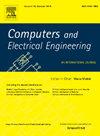Energy efficient anchor zone based routing protocol for IoT networks
IF 4
3区 计算机科学
Q1 COMPUTER SCIENCE, HARDWARE & ARCHITECTURE
引用次数: 0
Abstract
The day-to-day applications of the Internet of Things (IoT) in three-dimensional (3D) resource constrained IoT networks usually involve a transfer of data from several intermediary nodes. Where the unavailability of an efficient routing path leads to consumption of energy at nodes. In addition to this, it has been found that the nodes may get stuck at points where no path is available in the forward direction, while dealing with data transfer in a large geographical space. The non-availability of the forward path leads to the creation of void node problem (VNP). However, the literature revealed that the anchor-based methods are utilized to detour from VNP, but this leads to the overloading of the anchor node when multiple sources traverse the same path. So, this paper proposes a novel energy-efficient anchor zone-based routing (EAZR) protocol, where, the traffic passes through different nodes of the anchor zone rather than a single anchor node. The proposed protocol effectively divides the traffic among multiple nodes based on residual energy and this minimizes the energy consumption during data transmission in 3D resource-constrained IoT networks. This proposed method has been implemented using OMNET++ simulator and obtained simulation results have shown its supremacy over existing state-of-art techniques in terms of energy consumption, network lifetime, and other quality of service (QoS) parameters.
求助全文
约1分钟内获得全文
求助全文
来源期刊

Computers & Electrical Engineering
工程技术-工程:电子与电气
CiteScore
9.20
自引率
7.00%
发文量
661
审稿时长
47 days
期刊介绍:
The impact of computers has nowhere been more revolutionary than in electrical engineering. The design, analysis, and operation of electrical and electronic systems are now dominated by computers, a transformation that has been motivated by the natural ease of interface between computers and electrical systems, and the promise of spectacular improvements in speed and efficiency.
Published since 1973, Computers & Electrical Engineering provides rapid publication of topical research into the integration of computer technology and computational techniques with electrical and electronic systems. The journal publishes papers featuring novel implementations of computers and computational techniques in areas like signal and image processing, high-performance computing, parallel processing, and communications. Special attention will be paid to papers describing innovative architectures, algorithms, and software tools.
 求助内容:
求助内容: 应助结果提醒方式:
应助结果提醒方式:


